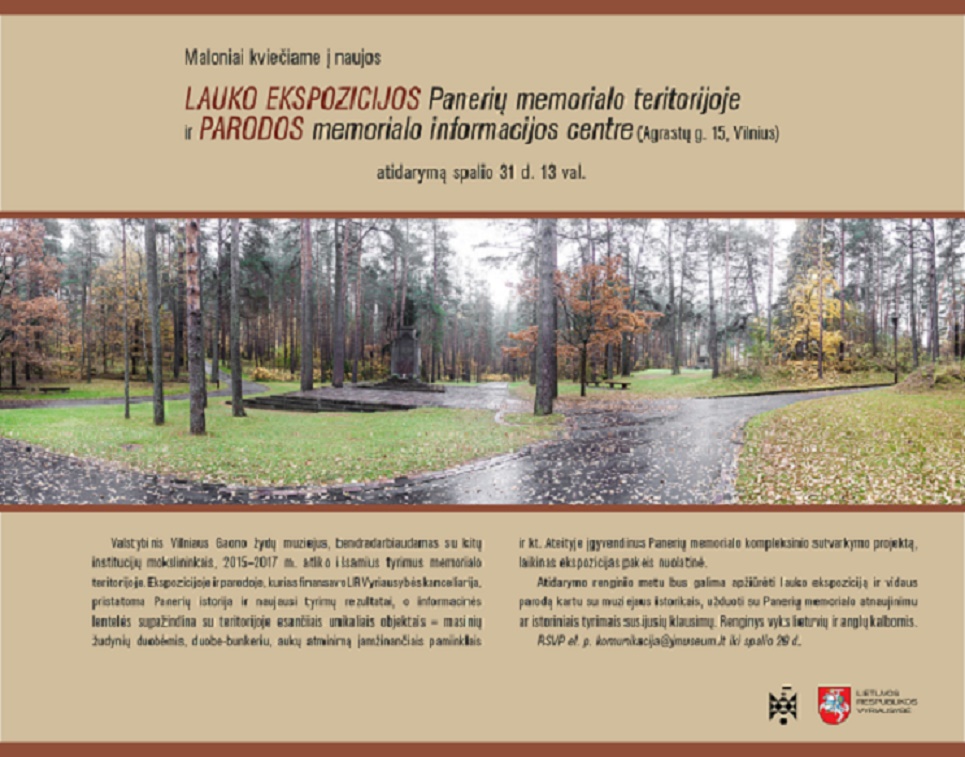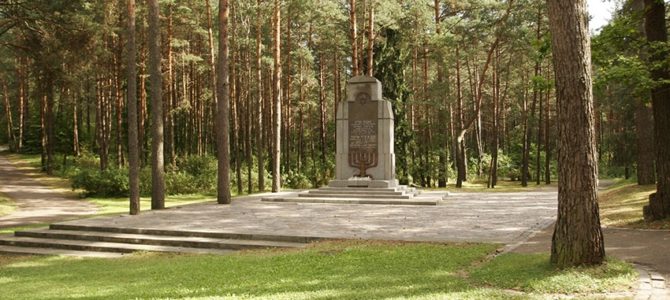A new exhibit will be unveiled at the Ponar Memorial Complex on October 31. Ponar was a place where residents of Vilnius, including Jews, liked to go in the summer, but which became infamous as the site of the mass murder of Jews in Lithuania. The exhibit features the history of Ponar and the mass murder of Jews there. It was made by the Vilna Gaon State Jewish Museum and financed by the Chancellery of the Government of Lithuania.
Although Ponar is now synonymous with the mass murder site where Nazis and Lithuanians murdered the Jews of Vilnius and surrounding areas, before World War II the forest near Vilnius was a frequent destination for those seeking a proximate location. In 1939 the town was even named an official vacation destination. When the Soviet Union occupied Lithuania, they began to exhume more than a dozen pits for aviation fuel tanks and munitions stores there. Between 1941 and 1944 from 50,000 to 70,000 Jews were murdered there. Most were Jews from Vilnius and the surrounding region, but also included Polish resistance fighters, some Lithuanians, Soviet POWs, Roma and others.
The first monument to the victims at Ponar was erected in 1948, but was swiftly removed by Soviet authorities, and until the restoration of Lithuanian independence in 1990 the site was officially commemorated as a site where Soviet citizens were murdered by fascists. In 1991 the Ponar site was given over to the Vilna Gaon State Jewish Museum. In early 2014 a project for maintaining and updating the Ponar Memorial Complex began along with comprehensive studies of the killing field which wholly changed ideas about the site. Different new sites were located there: mass murder sites, a tunnel for prisoners, guard posts, the location of former buildings and gates. It also became clear that the mass murder territory was significantly larger than it had been thought before: it probably spanned a territory of 70 hectares.
Ponar Memorial Complex museum historian Zigmas Vitkus said there haven’t been thorough studies of the territory until now.
“The history of the mass murders at Ponar has been thoroughly examined, but the site itself has only been examined in parts. Four years ago when a portion formed by Nazi pilots in 1944 was discovered, we asked historians and geophysical experts from the Institute of Lithuanian History for help. The results from historical research and traditional and geophysical methods (scans of the surface in 3-D, geo-radar and electric tomography) were unbelievable. Following the results of investigation from 2015 to 2017, the territory of the Ponar Memorial Complex became more readable. In other words, we now know exactly what happened where and what the machinery of the mass murder of Jews accomplished,” Zigmas Vitkus said.
The new exhibit and the Ponar Memorial Complex Exhibit demonstrates the complicated history of Ponar and the results of new research, while a new information stand tells visitors of the unique sites at the location: mass murder pits, bunker pits where the brennerbrigad were held, where the Nazis ordered the exhumation and cremation of bodies and commemorative markers at the site. The exhibit is in four languages, Lithuanian, English, Polish and Hebrew. Early next year there are plans to present a special app for visitors to learn about the history of Ponar, and after implementation of the comprehensive project for the renovation of the Ponar Memorial Complex the temporary exhibit should become permanent.



